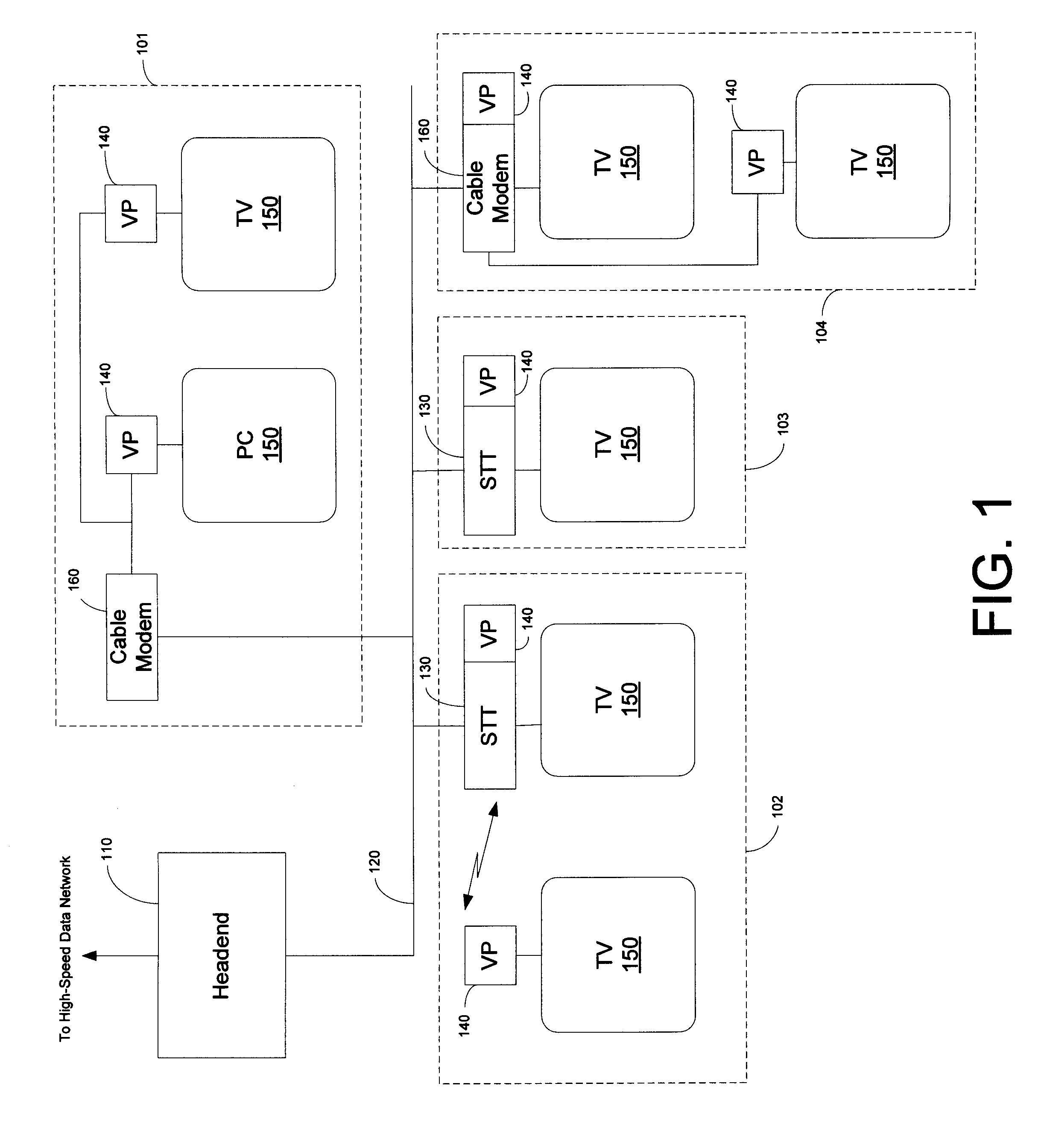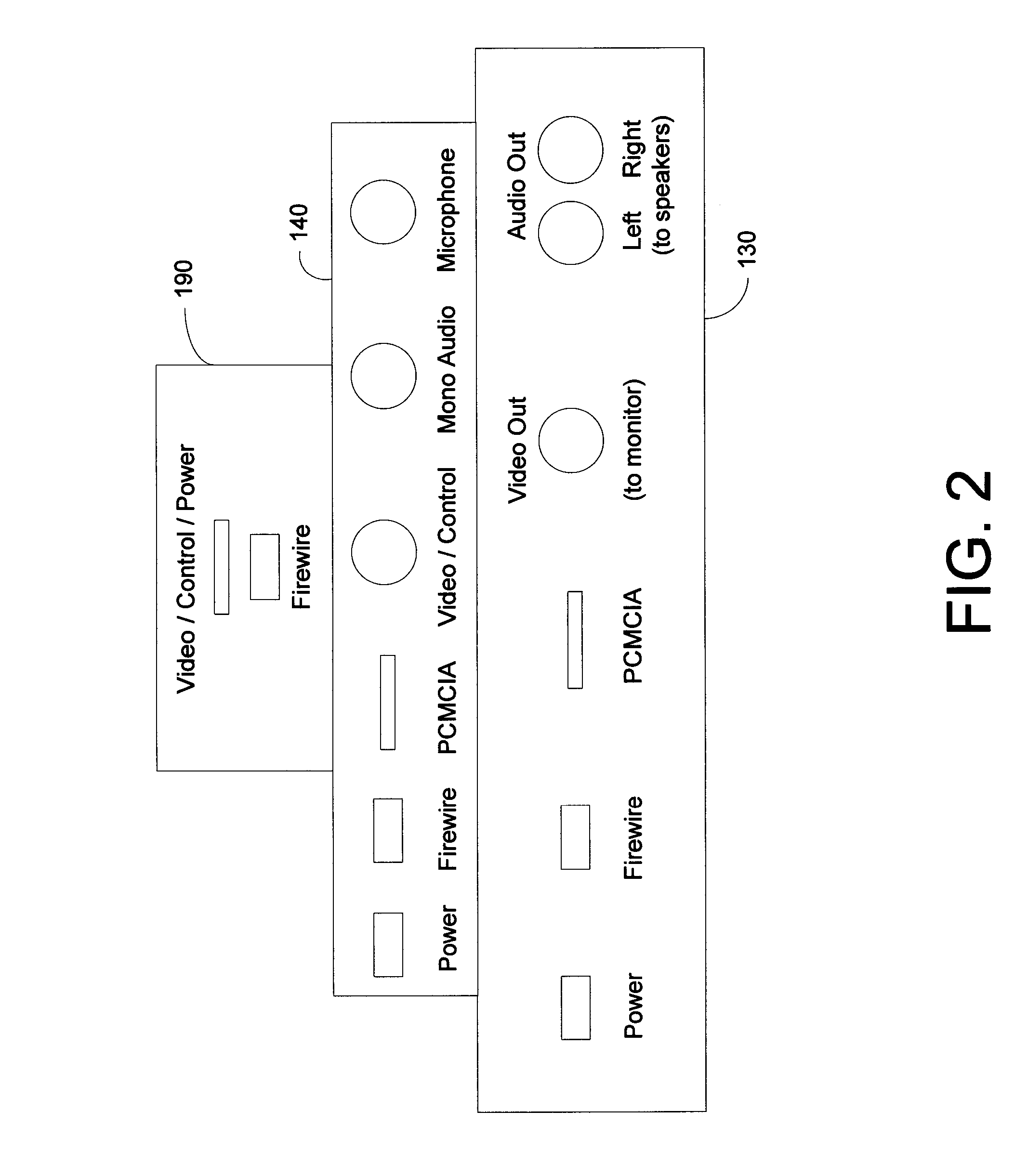Videophone over cable networks
a videophone and cable network technology, applied in the field of video telephone systems, can solve the problems of inability to implement video telephony over existing telephone lines, and inability to meet the requirements of clarity and sharpness, etc., to achieve the effect of sharing the cost of infrastructure and being efficient and inexpensiv
- Summary
- Abstract
- Description
- Claims
- Application Information
AI Technical Summary
Benefits of technology
Problems solved by technology
Method used
Image
Examples
Embodiment Construction
[0030]Referring now to FIG. 1, a general block diagram of a CATV system 100 having several uses 101, 102, 103, 104 equipped with videophone capabilities is shown. The headend 110 is connected to the users 101, 102, 103, 104 via a cable 120, which may include various media, such as, for example, fiber optic, copper, or hybrid-fiber-coax (HFC). The headend 110 may also be connected to another CATV network 100′ via a high-speed transmission medium 38, such as, for example a satellite network, a high-speed telephone network, or the like. Various videophone configurations are shown in FIG. 1. In a standard videophone configuration, such as that of user 103, data is received by an STT 130 and communicated to a VP 140 co-located with the STT 130. The VP 140 processes the data and provides it either directly to a display device 150, such as, for example, a television set, or provides it to STT 130 for further processing and display by the display device 150. In an alternative configuration ...
PUM
 Login to View More
Login to View More Abstract
Description
Claims
Application Information
 Login to View More
Login to View More - R&D
- Intellectual Property
- Life Sciences
- Materials
- Tech Scout
- Unparalleled Data Quality
- Higher Quality Content
- 60% Fewer Hallucinations
Browse by: Latest US Patents, China's latest patents, Technical Efficacy Thesaurus, Application Domain, Technology Topic, Popular Technical Reports.
© 2025 PatSnap. All rights reserved.Legal|Privacy policy|Modern Slavery Act Transparency Statement|Sitemap|About US| Contact US: help@patsnap.com



